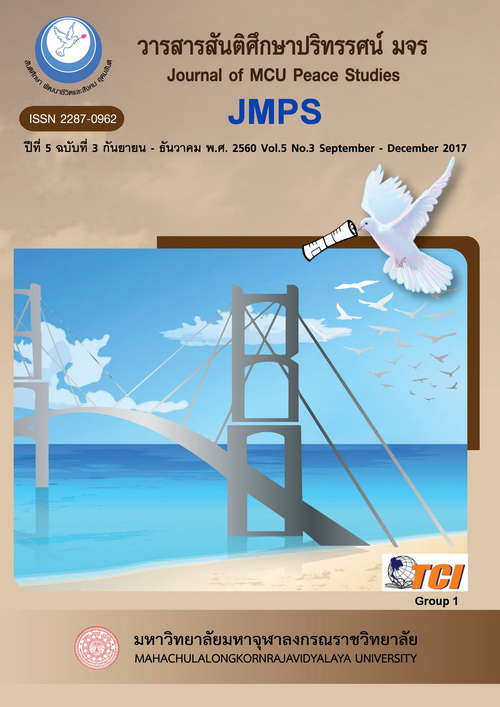Marketing Communication Strategy for Promoting Tourism in The Upper Southern Region
Main Article Content
บทคัดย่อ
This research aimed to 1) study marketing communication strategy to promote tourism in the upper southern region, 2) study factors related to travel choosing decision in the upper southern region, and 3) develop appropriate marketing communication strategy guidelines for travel competition in the upper southern region. This is mixed methods research: qualitative and quantitative. A Qualitative method was implemented by studying related documents, interviewing key information givers from sources of policy, tourism entrepreneur, and tourists. As a quantitative method, questionnaires were distributed to a sample consisted of 400 Thai and foreign tourists traveling in seven provinces in the upper southern region: Chumphon, Ranonng, Suratthani, Phuket, Phung-nga, Krabi, and Nakhon Si Thammarat. The content was analyzed. The statistics used for data analysis were mean, standard deviation, and Pearson’s Correlation. They were synthesized to present the paradigm of constructing marketing communication strategy guidelines which are appropriate to use for travel competition.
The research results revealed that 1) marketing communication planning implementation was to create a common understanding and communication so as to construct perceptions that Thailand was ‘QUALITY Leisure Destination’ using Thai lifestyle as a content and marketing communication tools which comprised mass media, digital media, and personal media were integrated, 2) a tourist behavior factor, potentiality of a tourism source factor, and marketing mix factors had significant correlations with travel choosing decision in the upper southern region at the .05 level. 3) appropriate marketing communication strategy guidelines for travel competition in the upper southern region through ‘NICE’ paradigm comprised 3.1) networks which meant that provinces in the upper southern region should build strong networks to corporate tourism implementation planning, 3.2) identity which meant that provinces in the upper southern region should construct clearly outstanding provincial identities to reflect provincial identification,
3.3) communication integration which meant that using various marketing communication tools appropriate for tourism sources of each province in the upper southern region, and 3.4) equity which meant that emphasizing the brand of tourism sources in the upper southern region as the marketing leader that continuously communicate information and tourism identities in all forms of communication so as to be the first class tourism sources which had both quality and social responsibility.
Article Details
ทัศนะและความคิดเห็นที่ปรากฏในบทความในวารสาร ถือเป็นความรับผิดชอบของผู้เขียนบทความนั้น และไม่ถือเป็นทัศนะและความรับผิดชอบของกองบรรณาธิการ ยินยอมว่าบทความเป็นลิขสิทธิ์ของวารสาร

